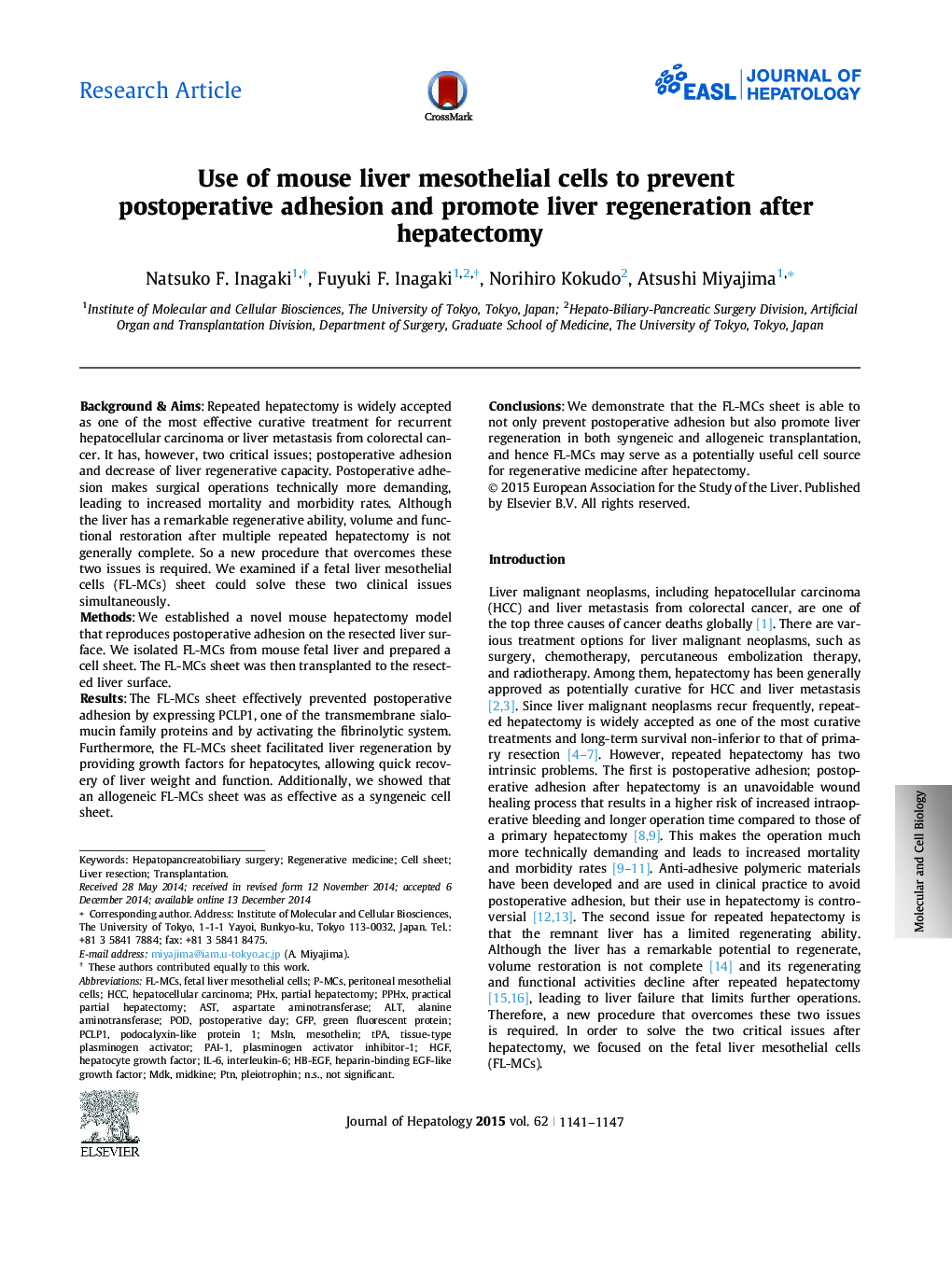| Article ID | Journal | Published Year | Pages | File Type |
|---|---|---|---|---|
| 6103042 | Journal of Hepatology | 2015 | 7 Pages |
Background & AimsRepeated hepatectomy is widely accepted as one of the most effective curative treatment for recurrent hepatocellular carcinoma or liver metastasis from colorectal cancer. It has, however, two critical issues; postoperative adhesion and decrease of liver regenerative capacity. Postoperative adhesion makes surgical operations technically more demanding, leading to increased mortality and morbidity rates. Although the liver has a remarkable regenerative ability, volume and functional restoration after multiple repeated hepatectomy is not generally complete. So a new procedure that overcomes these two issues is required. We examined if a fetal liver mesothelial cells (FL-MCs) sheet could solve these two clinical issues simultaneously.MethodsWe established a novel mouse hepatectomy model that reproduces postoperative adhesion on the resected liver surface. We isolated FL-MCs from mouse fetal liver and prepared a cell sheet. The FL-MCs sheet was then transplanted to the resected liver surface.ResultsThe FL-MCs sheet effectively prevented postoperative adhesion by expressing PCLP1, one of the transmembrane sialomucin family proteins and by activating the fibrinolytic system. Furthermore, the FL-MCs sheet facilitated liver regeneration by providing growth factors for hepatocytes, allowing quick recovery of liver weight and function. Additionally, we showed that an allogeneic FL-MCs sheet was as effective as a syngeneic cell sheet.ConclusionsWe demonstrate that the FL-MCs sheet is able to not only prevent postoperative adhesion but also promote liver regeneration in both syngeneic and allogeneic transplantation, and hence FL-MCs may serve as a potentially useful cell source for regenerative medicine after hepatectomy.
Graphical abstractDownload high-res image (127KB)Download full-size image
